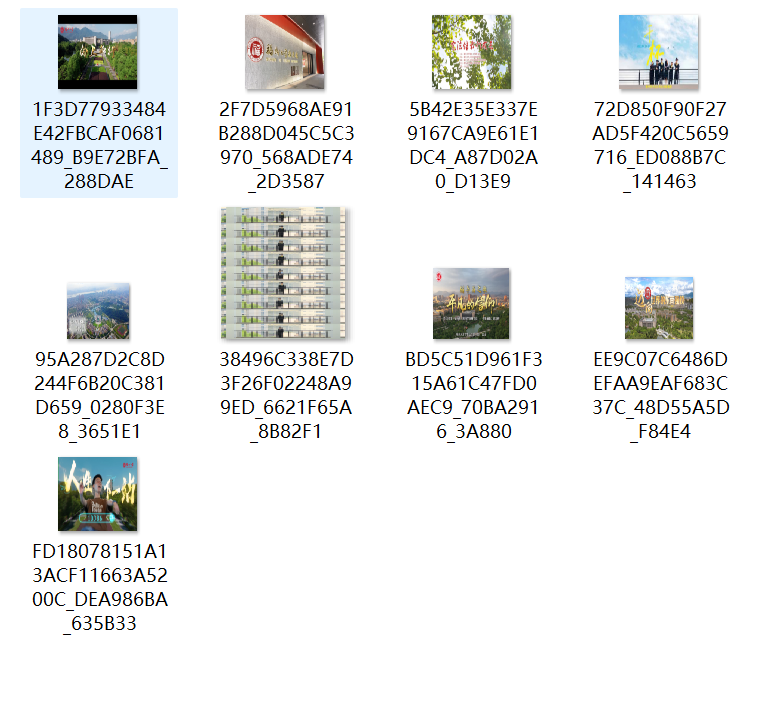数据采集作业1
1.作业①:
要求:用requests和BeautifulSoup库方法定向爬取给定网址(http://www.shanghairanking.cn/rankings/bcur/2020)的数据,屏幕打印爬取的大学排名信息。
输出信息:
| 排名 | 学校名称 | 省市 | 学校类型 | 总分 |
|---|---|---|---|---|
| 1 | 清华大学 | 北京 | 综合 | 852.5 |
| 2 | ... | ... | ... | ... |
1.1作业代码和图片
import requests
from bs4 import BeautifulSoup
#目标URL
url = 'https://www.shanghairanking.cn/rankings/bcur/2020'
rank_list = []
try:
#发送请求并获取网页内容
response = requests.get(url)
response.encoding = 'utf-8'
html_content = response.text
soup = BeautifulSoup(html_content, "html.parser")
table = soup.find('table', attrs= {'class': 'rk-table'})
if table:
trs = table.find_all('tr')[1:] #跳过表头
for tr in trs:
tds = tr.find_all('td')
if len(tds) >= 5:
rank = int(tds[0].text.strip())
name_span = tds[1].find('span', attrs = {'class': 'name-cn'})
name = name_span.text.strip() #获取学校的中文名称
province_city = tds[2].text.strip()
campus_type = tds[3].text.strip()
score = float(tds[4].text.strip())
rank_list.append([rank, name, province_city, campus_type, score])
except Exception as err:
print(err)
#打印结果
print("{:^10}\t{:^15}\t{:^10}\t{:^10}\t{:^10}".format("排名", "学校名称", "省市", "类型", "总分"))
print("-" * 75)
for u in rank_list:
print("{:^10}\t{:^15}\t{:^10}\t{:^10}\t{:^10.1f}".format(u[0], u[1], u[2], u[3], u[4]))

1.2心得体会
通过编写代码实践,实现了从 Python 爬虫理论知识到实际应用的跨越。我对requests库的请求发送、响应处理,以及BeautifulSoup库的标签定位、文本提取等操作更加熟练,能够根据实际网页结构灵活调整代码逻辑。例如,在定位表格和span标签时,灵活运用find与find_all方法,并结合attrs参数指定类名,这些操作从最初的 “对照文档编写” 转变为 “根据需求灵活运用”,技术熟练度显著提升。
作业②:
要求:用requests和re库方法设计某个商城(自已选择)商品比价定向爬虫,爬取该商城,以关键词“书包”搜索页面的数据,爬取商品名称和价格。
输出信息:
| 序号 | 价格 | 商品名 |
|---|---|---|
| 1 | 65.00 | xxx |
| 2..... |
2.1作业代码和图片
import requests
import re
url = 'https://search.dangdang.com/?key=%CA%E9%B0%FC&category_id=10009684#J_tab'
try:
headers = {
"User-Agent": "Mozilla/5.0 (Windows NT 10.0; Win64; x64) AppleWebKit/537.36 (KHTML, like Gecko) Chrome/118.0.0.0 Safari/537.36"
}
response = requests.get(url, headers=headers)
response.encoding = response.apparent_encoding
data = response.text
table = re.search(r'<ul class="bigimg cloth_shoplist" id="component_59".*?>(.*?)</ul>', data, re.S)
if table:
content = table.group(1)
print("序号\t价格\t\t商品名称")
lis = re.findall(r'<li.*?>(.*?)</li>', content, re.S)
#序号变量i从1开始
i = 1
for li in lis:
price_bag = re.search(r'<span class="price_n">¥(.*?)</span>', li)
name_bag = re.search(r'<a title="(.*?)"', li)
if price_bag and name_bag:
price = price_bag.group(1).strip()
names = name_bag.group(1).strip()
#直接处理整个名称字符串
clean_name = re.sub(r'\s+', ' ', names)
print("{}\t{}\t\t{}".format(i, price, clean_name))
else:
print("{}\t未找到商品价格或名称".format(i))
i += 1
else:
print("未找到商品列表容器")
except Exception as err:
print(err)

2.2心得体会
通过实践,加深了我对正则表达式逻辑的理解。在数据提取环节,正则表达式成为核心工具:用re.search定位商品列表的ul容器,再以re.findall提取每条商品的li标签,最后针对价格(price_n类)和商品名称(title属性)用re.search精准匹配。过程中,用re.sub替换多余空格清洗商品名称,以及通过条件判断过滤无效数据,让我体会到正则表达式在复杂 HTML 文本中 “精准筛选” 的优势,也明白数据清洗对提升信息可用性的重要性。
作业③:
要求:爬取一个给定网页( https://news.fzu.edu.cn/yxfd.htm)或者自选网页的所有JPEG、JPG或PNG格式图片文件
输出信息:将自选网页内的所有JPEG、JPG或PNG格式图片件保存在一个文件夹中
3.1作业代码和图片
import requests
import os
from bs4 import BeautifulSoup
if not os.path.exists('fzu_images'):
os.makedirs('fzu_images')
url = 'https://news.fzu.edu.cn/yxfd.htm'
try:
#发送请求并获取网页内容
response = requests.get(url)
response.raise_for_status()
response.encoding = 'utf-8'
soup = BeautifulSoup(response.text, "html.parser")
data = soup.find('section', attrs={'class': 'n_tutu'})
imgs = data.find_all('img')
for img in imgs:
img_src = img.get('src')
if img_src.endswith(('.jpg','.jpeg','.png')):
img_url = "https://news.fzu.edu.cn/" + img_src
filename = os.path.basename(img_url)
with open ('fzu_images/'+filename,'wb') as f:
f.write(requests.get(img_url).content)
print(f"下载成功:{filename}")
except Exception as err:
print(err)


3.2心得体会
通过实践,我掌握了图片类文件下载的基本方法,也加强了我对BeautifulSoup的认识与运用。




 浙公网安备 33010602011771号
浙公网安备 33010602011771号